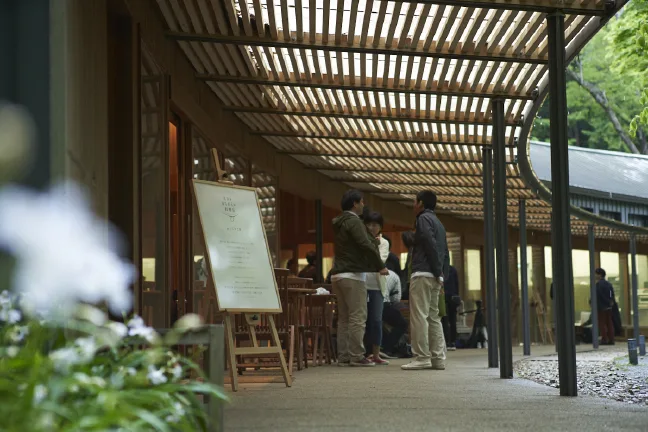Next on our plates: The Amazon Rainforest!
January 28, 2020The Future of Skills
February 4, 2020A story by Linda Hofman
At the beginning of this new decennium, here are five advices to think positively about the future. Not in the least, it is a solid antidote against all dark future assumptions coming from 2019, starting with the melting Iceberg and ending with Greta and her climate strikes necessarily becoming Times person of the year 2019 Greta Thunberg. Here they are:
- Don’t listen to white bears advices
- Finding purpose
- Follow the fun
- Act from hope
- Flip thinking to find solutions
1. Don’t listen to the white bears advice!
When people advice you not to think about your desire for a cigarette while you quit smoking… When people advice you not think about chocolate when you are on a diet… When people advice you not to think of the partner who has recently left you…: Don’t follow their advice! Actually, the advice aggravates your problem. Many of us know this as the pink elephant or white bear phenomenon. When asked not to think of them, you can’t get them out of your head. Because every time you decide against thinking, they pop up right back in your head. In scientific language this is called ironic rebound It is founded in our universal neurophysiological condition (Wegner & Schneider, 2003)[1].
What does this mean for the future, both your own and society’s? Basically, it means that you have to phrase your wishes, desires and goals in a positive manner. Phrasing it in a negative way — I don’t want to think about cigarettes or chocolate — actually makes you think about them more, which wears your willpower out.
Here’s an example from a broader perspective. I am happily working at International Lifestyle Studies (ILS), part of the Dutch academy for Creative Industries. At ILS we have constructed a program aiming to let our students experience less stress. I appreciate the program. But the aim is clumsily formulated. Respecting the ‘ironic rebound’ phenomenon, it is much better to focus on helping students feel good about themselves instead of helping them to experience less stress.
On an even broader level we can ask ourselves what would happen if we didn’t formulate our planet’s environmental goals in a negative way. Instead of phrasing them like this — help avoid raising the earth’s temperature by 1,5 degrees Celsius, what if we phrased the entire statement in a different way using more positive vocabulary? (Suggestions are welcome as comments at the end of this blog 😊. )
Remember Al Gore’s prediction in 2006 about our planet over 50 years? It was a wake-up call, justified to the full, but framed negatively. That drains energy. Have a look at a recently published report by Wageningen University, the title alone is contrastingly optimistic: This is how green the Netherlands could be in 100 years. It promotes the idea that the Netherlands will stand strong and firm, and of course, at the same time fighting against and adapting to climate change. The report’s approach helps to generate and channel our energies.
2. Finding Purpose
“Eco-anxiety”, “climate grief” and “ecological despair” are different terms used by experts to refer to the mental toll on people when they understand the magnitude of losses incurred by climate change and the lack of necessary action taken by those in power. Birthstrikers are women who refuse to have children until climate change ends. Flight shaming is a trend in traveling. ‘Meat shaming’ will be next, framing vegans and carnivores against each other. Not only does this black-and-white thinking divide people. It drains their energy and makes them depressed.

If a person is not able to see a positive, united future, if a person doesn’t live with hope and dreams, this effects mental wellbeing and happiness. Known as: depression. Miralles and Garcia (2016) write in their book Ikagai about logo therapy, the Japanese way to become happy. This therapy, developed by psychiatrist Victor Frankl, focusses on the search for purpose in someone’s life. If someone has a purpose in life, if someone has hopes and dreams, the future looks brighter and is more enjoyable. Focussing on a dystopian future doesn’t help a lot. It slows down their capacity to act.
What happens in a society where people don’t see hope for the future? In 2016 sociologist Jean Twenge, the author of “ Generation Me: Why Today’s Young Americans Are More Confident, Assertive, Entitled — and More Miserable Than Ever Before”, stated in New York magazine that her research let her conclude that “modern life is not good for mental health”. If modern life is unkind to our mental health, it’s no doubt in part because so many young people are worried about their employment or their relationships, at a time when their futures are already far less clear than those of their parents. Yes, the end of the world as we know it, is nigh. But framing new goals positively, helps to motivate us and perceive a fresh future with more beauty and hope.
3. Follow the fun
Fun motivates. If you want to motivate yourself and stimulate others to get involved in the future: Use Fun. The gaming industry has understood this from day one: it is solidly based on fun theory. Fun makes you feel good. Combining fun with novelties makes things interesting. When and where things are both novel and fun, we immediately are intrinsically motivated to join in. The power of fun & freshness keeps people engaged, prompting them to join. Which might lead to a viral spiral of engagement.
What does this mean for the plastic soups that harm oceans and life? Fear and nagging will only bring us that far. But consider the Waterside Gobbles, as designed by Kenneth Arnolds. The Waterside Gobble is a fresh and funny way to remove plastic pollution from our urban water sides. Arnolds uses his designs to engage people, make a positive impact while exploring the boundaries of what’s possible. Arnolds explores futures.
4. Act from hope
Trying to solve wicked problems to prepare for a sustainable future can result in feelings of hopelessness, even despair. Envisioning yourself a negative future gives you stress. Negativity does something with your brain, targeting directly to the most stress-sensitive part of it: the reptilian-part (Kazlev et al. 2003)[2]. When negativity shows up, this part of the brain takes over from the more rational brain parts. Negativity triggers fear and fear triggers survival mode. Your body is primed for action: fight or flight mode — or : freeze. Pretending that you are dead, or at least a little bit.
Obviously, that is not the best state of mind to solve wicked problems. These are problems that only can be solved by serious clear thinking, by open discussions in which many concerted parties join and participate. Negativity will not help us solve the biggest problems we’re facing in our lifetime.
When it comes to the future, and its wicked problems, negativity is mostly our key frame of reference and point of departure. Just open Netflix and you find series like Black Mirror, Altered Carbon or The 100 or look at the 2019 released sci-fi movies like Aniara or Star Wars: The Rise of Skywalker and you are excused of inevitably thinking that the new age of ‘Winter’ is coming. Our children learn negativity from us especially when we allow them to watch and play anything they please. Learning:The world is collapsing.(Anguera & Santisteban. 2016)[3].
Our brain is developed to focus on problems and negativity. To change the future in a more sustainable way, we have to act from hope. We have to believe in a better, positive future. We have to be aware that we are part of the future and that we can influence the future by creating our own (Bishop & Hines. 2012)[4].
5. Future Literacy and Flip Thinking
There is no one fixed future. There are futures, in plural. In all of those envisioned futures there will be moments of trust and hope. ‘Weighing’ them, linking them, sorting out the more realistic ones and the ones for serious dreamers, that’s our task. Understanding the assumptions behind all of them makes us future literate. That helps us creating better and broader informed decisions about the future(s), combining diverse ingredients of many perceived futures before they actually arrive.

Here are examples of Future Literacy in action. When I’d ask you to draw something about the future of technology, what would you draw? Probably, machinery and computer-ish objects will be included. That might be realistic, but why not think fuzzy technology? Like the Lilicoptère© (2012) of artist Joana Vasconcelos. Why couldn’t future technology be soft and huggable? That idea invites us rethink the future of technology in a much friendlier way. Future literacy invites you to infuse your thinking, ideas and imagination with a new unexpected freshness. Embrace it! Because, to quote, Henry Ford:
“If you always do what you’ve always done, you’ll always get what you’ve always got.”
Future literacy helps us to prepare for a solid future in the making. So does Flip Thinking. Flip Thinking is a technique that helps you to transform problems into opportunities. It encourages you to avoid being a ‘yes-but’ type of person and helps you become a ‘yes-and’ type of person. People who continually respond to life by saying ‘yes-but’ don’t just kill every good idea, they ruin complete companies, and can even bring down entire industries.
This is the thinking frame of the ‘yes-but’ type of people:
“Yes-but that’s not how it works.
Yes-but we can’t afford it.
Yes-but what if we get it wrong!”
Yes-but people can only see clouds on the horizon.”
And this is the thinking frame of the ‘yes-and’ type of people:
“Yes, and how can we make sure that it works?
Yes, and what can we invest?
Yes, and what if everything works out?”
Yes-and people ask the right questions. They are not blind to the clouds but focus on the horizon.
To the decade we have just entered, I wish you:
5. A ‘yes-and’ type of mentality. Also, lots of future literacy and flip-thinking capacities.
4. That you manage to act from hope, not from dystopian fear.
3. Fun! Especially when you are able to combine with fresh innovative ideas.
2. A fulfilling sense of PURPOSE.
1. Forget white bears and pink elephants. In order to focus more strongly on the positive sides of life.
Sources
- Wegner, Daniel M., and David J. Schneider. “The White Bear Story.” Psychological Inquiry 14.3–4 (2003): 326–29.
- Kazlev, M. Alan; et al. (2003–10–19). “The Triune Brain”. KHEPER.
- Anguera, C. Santisteban. A. (2016)’ Images of the Future: Perspectives of Students from Barcelona’. in the Journal of Futures Studies, September 2016, 21(1): 1–18.
- P. Bishop, P. A. Hines (2012). Teaching about the future. Houndmills. Palmgrave.
This is a story of the Futurist Club
by Science of the Time
Written by: Linda Hofman

Linda Hofman (MA. Bsc.) is professor in future foods & agriculture, in broader regions of Sustainability and Quality of Life. I help students and organisations to develop, describe and design sustainable futures and develop first steps towards this desired future. For the Future of Food, I consider the whole food systems as my playfield: food from ground to mouth and in all levels from the agricultural sector, food production and technology, but also food and the human body or vice versa.
Currently I am –as one of the founders of the used methodology ‘prototyping for a sustainable future with values’- working on the Sustainable Future of Europe in an International Erasmus project called ‘Foresight’. Also I’m part of a futures study about digital learning environment ‘Learning ecologies’ together with several Dutch Universities and organisations.
I like to give keynotes and was invited at Jonnie Boer’s Chef’s revolution, Paaspop Academy and several food transition tables.
I’m obsessed by the topic future consciousness in correlation with defence modus and like the word ‘meliorist’ and to wear big outdoor boots.



